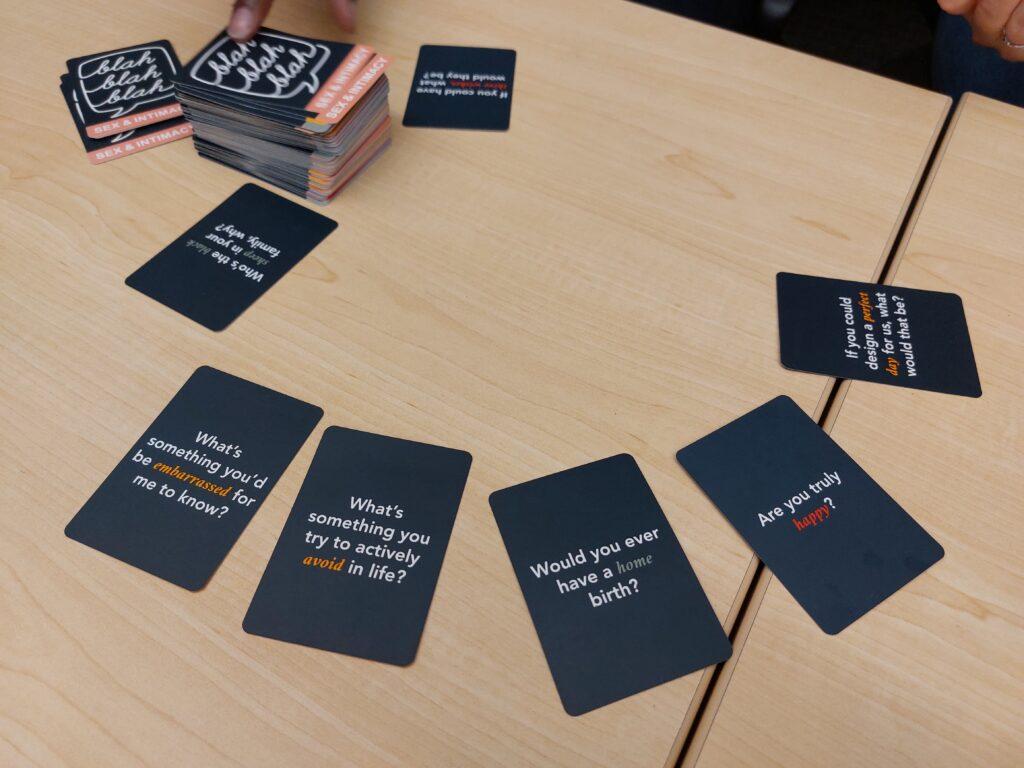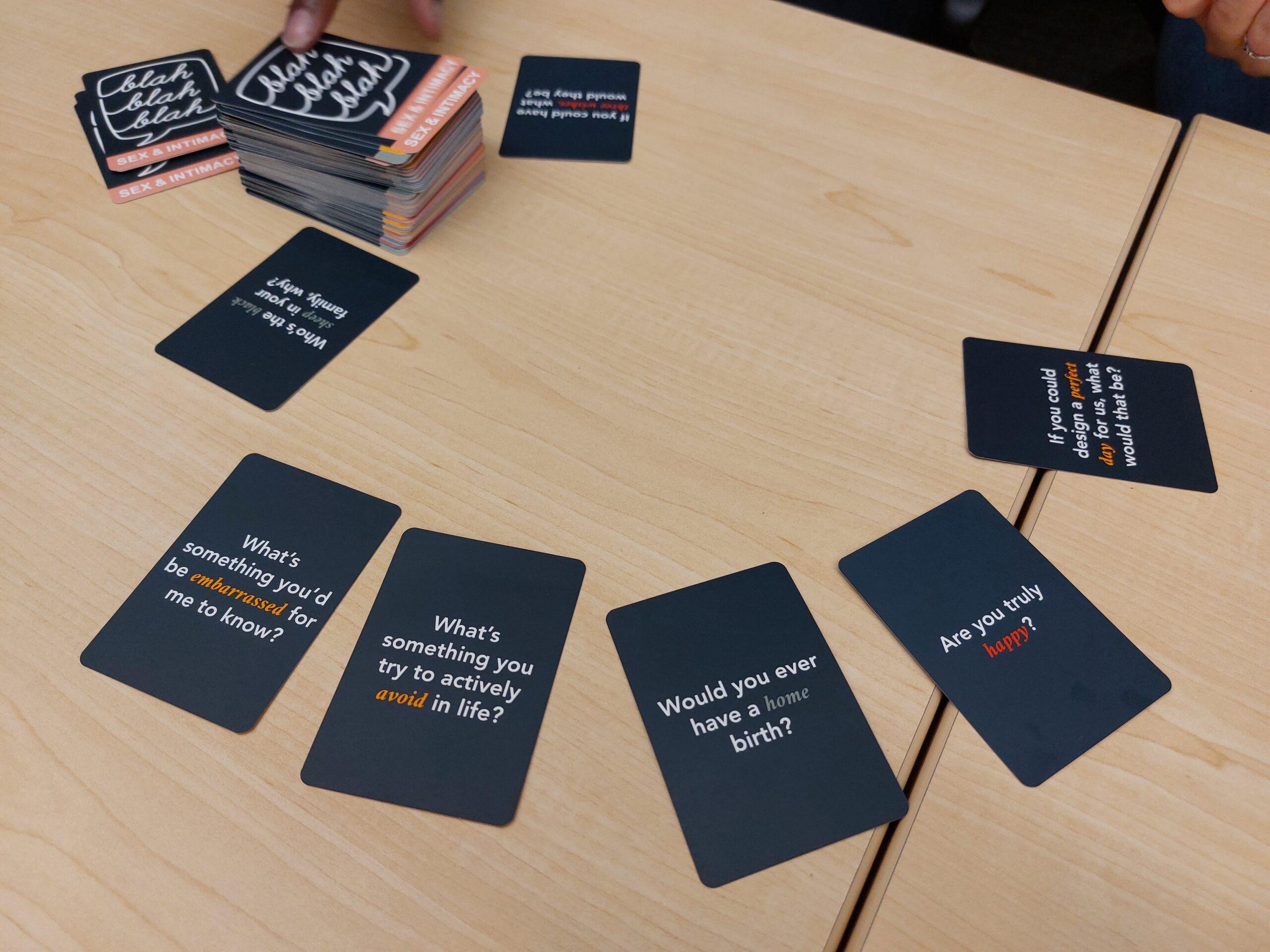About the Game
I went to Game Night this past Wednesday and got to play the game Love Lingual with other students there for my critical play. Love Lingual was created by a couple, Laura and Julien, who turned their “one question, every day” practice while on a long distance relationship into this published game. It’s a card game that consists of 150 cards and there are no set rules for how to play.
The game’s intended audience is romantic couples in any stage of their relationship looking to deepen their bond through conversation. At Game Night, we played the game as a group of 5, skipping the questions in the Intimacy and Couple categories since it didn’t make sense for us to answer those questions.

[Some of the questions we drew while playing this game as a group at Game Night]
Formal Elements
- Players
- Since it’s a game for couples, the intended number of players is 2, but the game doesn’t explicitly say that on the box. Leaving out information that is typically specified on game boxes or rulebooks (such as required players, recommended age, and duration of play) makes the game more flexible for any players who would be interested in engaging in deep conversation with others.
- In our case, we just repurposed the game into a non-couple-specific getting to know you game and it worked fine. I imagine the game could also work for non-traditional couples (relationships involving more than 2 people), and multiple couples can also play together (such as on a double date) to get to know everyone better.
- Rules
- There are no rules! This made it a little difficult for us to figure out how we should play as a group of 5 because we had to make decisions about how turns and rounds should work.
- Decisions we had to make included: Do all players go around answering the same question? Or does each player draw a new card and answer the question exclusively? What should other players do when the current player answers a question?
- If it’s just a couple playing this game, these decisions would be simplified, though the 2 of them would still need to decide on turn taking.
- The lack of rules does give a lot of agency for players to decide what would suit them best, and it also gives them the flexibility to change the way they play the game based on their experience with the game over time.
- There are no rules! This made it a little difficult for us to figure out how we should play as a group of 5 because we had to make decisions about how turns and rounds should work.
- Resources
- The most interesting part about the game is the large bank of questions that cover many different aspects of a relationship as well as broader topics about life. Every question in the game falls in one of five categories: Family, Intimacy, Past & Future, Individual, and Couple. Based on the questions I got to read, I think these five categories and their associated questions are thoughtfully designed.
- Another interesting thing about the design of the cards is that the category is written on the back of the card rather than the same side that has the question (see photo below, taken from the game website). I think this is a nice design because it gives the players the option to easily filter the cards based on which categories they want to focus on, without having to actually see the side that has the question which might spoil the fun.

Critical Discussion
I think the questions on the cards are thoughtfully designed for the core purpose of the game — to give romantic partners a reason and opportunity to talk about things that they might otherwise not think of discussing. However, I feel that the element of fun is somewhat missing in this game because of the lack of rules and a wider variety of resources. Although the design of the game box and cards does give a nice feel to the game, they don’t seem to add enough to make the deep conversations between couples into a fun game. In other words, if the same questions were instead just listed in an article and if a couple were to just go over the list, the same core purpose would still be satisfied.
While the game obviously is for the Fellowship type of fun, I believe it could do more to create the Sensation and Expression types of fun by incorporating more rules and additional resources.
- Sensation could be achieved by adding more questions and suggestions that involve touch. It’s a game for couples after all, and it would be good for the couple to not only converse but also try out different things involving touch.
- Expression could be achieved by throwing in whimsical and hypothetical questions that would allow the couple to further express themselves in response to interesting questions that wouldn’t really come up in real life.



